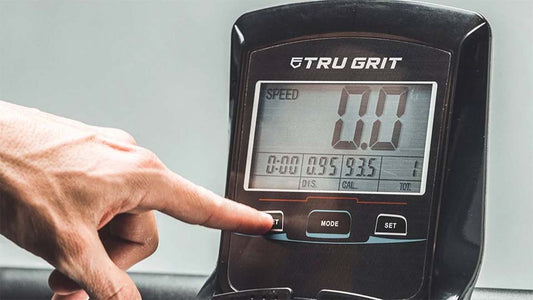How Long Should You Stay in a Sauna? Evidence-Based Durations, Tips & Safety
Wondering exactly how long to stay in a sauna for peak health and recovery? This evidence-based guide breaks down minutes-per-session, ideal weekly frequency, safety tips, and pro-level protocols—no guesswork required.

Introduction: Why Minutes Matter in the Sauna
Step into a sauna and the first thing you notice isn’t the cedar scent or the hiss of water on hot rocks—it’s time. The difference between an invigorating sweat and a dizzy stumble often hinges on just a few extra minutes. Sauna duration dictates how deeply heat penetrates muscle tissue, how sharply heart rate climbs, and ultimately how safe—and effective—your session will be. Yet most people guess their way through this ritual, risking dehydration or selling themselves short on the benefits.
This guide eliminates the guesswork. Backed by clinical research and performance data, we’ll reveal the exact minute-by-minute ranges that translate to optimal recovery, cardiovascular conditioning, and stress relief—while keeping you within the threshold of safe sauna time. No vague rules of thumb, just clear numbers you can trust.
At My Fitness Outlet, we champion tools and habits that unlock peak performance without compromise. Consider this your precision roadmap to sweating smarter, recovering faster, and living stronger—one well-timed session at a time.
Quick-Answer Cheat Sheet: Recommended Sauna Times at a Glance
| Experience Level | Traditional Dry (175 °F / 80 °C) |
Infrared (130 °F / 55 °C) |
Steam Room (110 °F / 43 °C, 100% RH) |
|---|---|---|---|
| Beginner | 5 – 10 min | 10 – 15 min | 5 – 7 min |
| Regular User | 15 – 20 min | 20 – 30 min | 8 – 12 min |
| Absolute Max* | 25 min | 40 min | 15 min |
*The maximum time in sauna assumes full hydration, no alcohol, and medical clearance; most benefits plateau well before these upper limits.
Use this grid as a quick reference before each sweat. Dial times down if your unit runs hotter than the temperatures listed, you’ve just finished an intense workout, or you’re still acclimating. Consistent, moderate sessions deliver bigger gains than one marathon sit.
Sources: Healthline – How Much Time to Spend in a Sauna, Verywell Health – How Long Should You Stay in a Sauna?, Laukkanen et al., 2015 (Finnish Sauna Study), American College of Sports Medicine – Sauna Safety Guidelines
Sauna-Time Calculator
Factors That Determine Your Ideal Sauna Time
1. Temperature & Humidity
Heat load—not just minutes—drives physiological stress. At 150 °F (66 °C), core temperature rises roughly 0.5 °C every five minutes; crank it to 190 °F (88 °C) and that climb almost doubles. Higher humidity does the same because sweat can’t evaporate. For every 10 °F shift upward, shave 2–3 minutes off your target window. Need a deeper dive into the research on sauna temperature vs time? We break down exact heat-to-minute ratios in a dedicated chart.
2. Experience Level
New to saunas? Start with 5–10 minutes and add just two minutes per week until you hit the sweet-spot range. This progressive overload lets your sweat glands, blood-pressure reflexes, and electrolyte balance adapt—mirroring how you’d periodize strength training. Check out our full guide on beginner sauna tips for a step-by-step acclimation schedule.
3. Age & Health Status
Older adults and anyone on beta-blockers, diuretics, or blood-pressure meds should err toward the lower end of the range and monitor heart rate closely. Pregnant users, people with uncontrolled hypertension, or anyone recovering from recent cardiac events fall into the category of who shouldn’t sauna—or should do so only under direct medical supervision.
4. Sauna Type Differences
Infrared cabins run cooler—typically 120–150 °F (49–66 °C)—so you can stay longer (20–30 minutes) and still achieve comparable cardiovascular strain. In a steam room the air is saturated, so despite lower temps (~110 °F / 43 °C) heat transfer is aggressive; limit yourself to 8–12 minutes. Get the full breakdown of infrared sauna duration versus dry and steam in our comparison post.
5. Pre- & Post-Workout Timing
Sitting in high heat before heavy lifts can sap explosive strength, so keep pre-workout exposure under five minutes—or skip it. Post-cardio, however, 10–15 minutes of dry heat amplifies VO₂-max gains and accelerates glycogen resynthesis by boosting peripheral blood flow. For a practical template, read our post-workout sauna routine.
Science-Backed Benefits by Time Interval
5 – 10 Minutes
Ideal athletic warm-up: elevates muscle temperature, enhances connective-tissue suppleness, and improves joint range of motion.1
➜ Use for dynamic stretching or mobility prep.
10 – 20 Minutes
The sweet-spot window linked to ~50 % lower cardiovascular mortality in Finnish cohorts (4–7 sessions / week).2 Endorphin levels spike here, delivering a mild “runner’s high.”3
➜ Target this range for heart-health and stress-relief gains.
20 – 30 Minutes
Promotes additional sweat-mediated fluid loss; evidence for “detox” is minor heavy-metal excretion only.4 Dehydration risk rises sharply—electrolyte replacement is non-negotiable.
➜ Attempt only when fully heat-adapted and well-hydrated. Read our full red-light therapy safety guide for further reading.
Show study references
- Heinonen I et al. Acute heat exposure improves flexibility. 2019.
- Laukkanen T et al. Sauna bathing and fatal CVD events. 2015.
- Kukkonen-Harjula K et al. Endorphin response to sauna. 2005.
- Boukhenna J et al. Sweat mineral analysis review. 2016.
- Stapleton J et al. Heat stress, performance & health risks. 2020.
- American College of Sports Medicine. Sauna Use & Safety. 2024.
How Often Should You Sauna? Your Frequency Matrix
Frequency is the secret sauce. Finnish longitudinal data shows 4–7 weekly sessions correlate with a 40–60 % drop in cardiovascular and all-cause mortality1. Still, not everyone can—or should—sweat daily. The matrix below helps you choose a rhythm that aligns with performance goals, schedule, and recovery capacity—answering the perennial query: how many times a week sauna?
| Sessions / Week |
Traditional Dry (min / session) |
Infrared (min / session) |
Steam Room (min / session) |
|---|---|---|---|
| 2 × – Recovery Boost | 15 – 20 | 20 – 30 | 8 – 10 |
| 3 × – Performance Routine | 15 – 20 | 25 – 30 | 10 – 12 |
| 4 – 5 × – Longevity Zone | 12 – 18 | 20 – 25 | 8 – 10 |
| 6 – 7 × – Daily Micros | 8 – 12 | 15 – 20 | 5 – 7 |
Busy schedule? Opt for daily micro-sessions—brief, consistent heat keeps heat-shock proteins active without exhausting you. Pushing heavy training? The 3× Performance Routine maintains plasma-volume gains while leaving headroom for workouts. Explore contrast therapy to amplify results without upping frequency.
*Hydrate, rest, and mind electrolyte intake. Scale back if you notice sleep disruption, persistent fatigue, or signs of over-reaching.
Proven Sauna Protocols to Try
1. Finnish 3-Cycle
The classic Nordic ritual maximizes heat-shock protein activation and lymphatic circulation while avoiding over-heating—perfect for longevity seekers.
- Heat: 12–15 min at 175 °F (80 °C).
- Cold plunge: 2–5 min in 50 °F (10 °C) water.
- Rest: 5 min at room temp, sipping water.
- Repeat the full cycle × 3.
➜ Total time: ~45 min (heat exposure 36 min split into 3 doses).
2. Infrared Recovery Flow
Lower temperatures let you stay longer without crushing the CNS—ideal on rest days or after endurance work.
- Sit 20 min at 140 °F (60 °C) infrared cabin.
- Every 4 min, inhale 4 s, hold 2 s, exhale 6 s—box-breathing (breathing cues).
- Hydrate with 250 ml electrolyte water midway through.
- Cool rinse (< 60 s) to close pores.
➜ Total time: ~25 min, CNS-friendly recovery boost.
3. Post-Workout Sauna Routine
Designed for lifters and HIIT athletes looking to bump VO₂-max and accelerate glycogen resynthesis—without sabotaging strength.
- Active cool-down: 10 min easy bike or walk.
- Dry-sauna: 15 min at 175 °F (80 °C).
- Consume 500 ml water + high-sodium electrolyte drink.
- Light stretch + protein/carbs meal within 30 min post-sauna.
➜ Total time: ~25 min (heat) + recovery nutrition stack.
Safety Guidelines & Contra-Indications
Hydration & Electrolytes
Follow the “½ L per 15 min” rule: sip 500 ml of water or an electrolyte solution for every quarter-hour of heat exposure. Signs you’re slipping into dehydration include cotton-mouth, pounding pulse, and a core temperature that keeps climbing after you exit. Replace sodium, potassium, and magnesium within 30 min to prevent headaches and next-day fatigue.
Recognising Overheating
Your body will warn you—listen. Red-flag symptoms:
- Dizziness or light-headed “head-rush.”
- Sudden nausea or queasy stomach.
- Rapid, irregular heartbeat over 150 bpm.
- Stop sweating or develop goose-bumps in the heat.
If any occur, exit immediately, cool in room-temp air, and hydrate. Resume only after heart rate and breathing normalise.
Who Should Limit / Avoid
Speak to a physician before regular sauna use if you have:
- Pregnancy—foetal temperature regulation is limited.
- Unstable angina, recent myocardial infarction, or severe arrhythmia.
- Uncontrolled hypertension (BP > 160/100 mmHg at rest).
- Active infection, fever, or inflammatory skin conditions.
- Medications that impair sweating or blood-pressure response (e.g., diuretics, beta-blockers).
For a full screening list, see our downloadable checklist below.
Temperature-Time Infographic
Visual learners rejoice: the chart below maps optimal sauna minutes to cabin temperature so you can scan and go. Use it to adjust your session length on the fly—higher heat means shorter sits, while infrared lets you stretch the clock.

Want to share this graphic on your site? Copy the <iframe> snippet below. We host it on a fast CDN to keep your page light and speedy.
Frequently Asked Questions
Can I stay in a sauna for 30 minutes?
Thirty-minute sessions exceed most guidelines. Healthy, heat-adapted people can tolerate it if fully hydrated, but studies show benefits plateau at 20 minutes while dehydration and dizziness risk accelerate afterward. When in doubt, split time into two shorter rounds with a cool break.
How long should I stay in an infrared sauna?
Infrared cabins run cooler—120-150 °F (49-66 °C)—so you can stay 20-30 minutes comfortably. That range raises core temperature enough for cardiovascular and recovery perks without the steep dehydration curve seen in higher-temp dry saunas.
Is it safe to sauna every day?
Daily sweats are generally safe for healthy adults provided sessions are 8-20 minutes, hydration is on point, and sleep quality remains solid. If you notice fatigue, elevated resting heart rate, or poor recovery, scale back to three to five sessions per week.
Do shorter sessions still give benefits?
Yes—5-10 minute “micro-sweats” improve vascular flexibility and prime muscles for mobility work. They’re perfect on hectic days or as a warm-up before stretching, though long-term longevity data favours cumulative weekly exposure over single brief bouts.
What’s the best time of day for sauna?
Evening sessions (1-2 hours before bed) aid sleep by triggering a post-sauna core-temperature drop. Morning sweats boost circulation and focus but can leave you feeling drained if hydration or breakfast lag behind.
How long after a workout should I wait before sauna?
Let heart rate fall below 100 bpm—usually 10 minutes of light cool-down—before entering heat. This prevents compounding cardiovascular load and allows muscles to begin clearing lactate before the thermal stressor.
Key Takeaways & Next Steps
- 15-20 minutes in a 175 °F dry sauna hits the sweet spot for most healthy adults.
- Infrared runs cooler; target 20-30 minutes. Steam’s high humidity means 8-12 minutes.
- Frequency matters—aim for 3-5 sessions per week, or daily micro-sweats of 8-12 minutes.
- Hydrate: ½ L per 15 minutes plus electrolytes.
- Listen to your body—exit at the first sign of dizziness or nausea.
Start shorter, build gradually, and track how you feel the next day. Ready to level up your home routine? Browse our curated lineup of premium cabins and heaters—no pressure, just performance-grade options—when you’re set to explore home sauna models.








